Panigyri: Celebrating the thousand-year-old raves of the Greek islands
Village parties founded on dance, touch and sweating with strangers are banned this year. In their honour, we take a look at the intergenerational all-nighters as captured by Berlin-based Greek photographer, Spyros Rennt.
Life
Words: Clare Considine
Photography: Spyros Rennt
What constitutes a rave? Dance, music, togetherness, a steady and thumping build towards collective ecstasy? If that is the formula, there is a strong argument that the ancient Greeks invented the rave. On 15th August each year, across the Greek islands, parties for the Feast of the Assumption of the Virgin Mary take place. They are the end-point of a summer filled with village parties, each celebrating the name day of their church’s saint. They might be a far cry from Berghain, but the country’s youth are increasingly embracing them as a celebration of their heritage that also offers all the wild-eyed joy of a classic all-nighter.
“Ancient Greeks held feasts with the key elements of wine, goat and music,” says Athens-based artist Kyveli Zoi who has spent every summer since childhood on the Greek island of Ikaria. “These are the most important elements of a Panigyri [Greek festival]. If all three are on point we may reach the zenith.”
It is this idea of achieving a certain group euphoria that piqued the interest of photographer Spyros Rennt. “I document queer culture at large and rave is a big part of that,” he explains. When he attended the most legendary of all of the Panigyri in Ikaria last summer he drew parallels between these traditional community parties and long hedonistic weekends in his hometown of Berlin.
“On Ikaria, they go on ‘til midday the next day,” he says. “By the morning there will mostly be a young crowd. They will be determined to stay. Like at a rave, where people stay as long as the DJ is playing, here people stay as long as the live band does. They really carry on playing all night. The music starts slow and picks up. In the end people get really wild”.
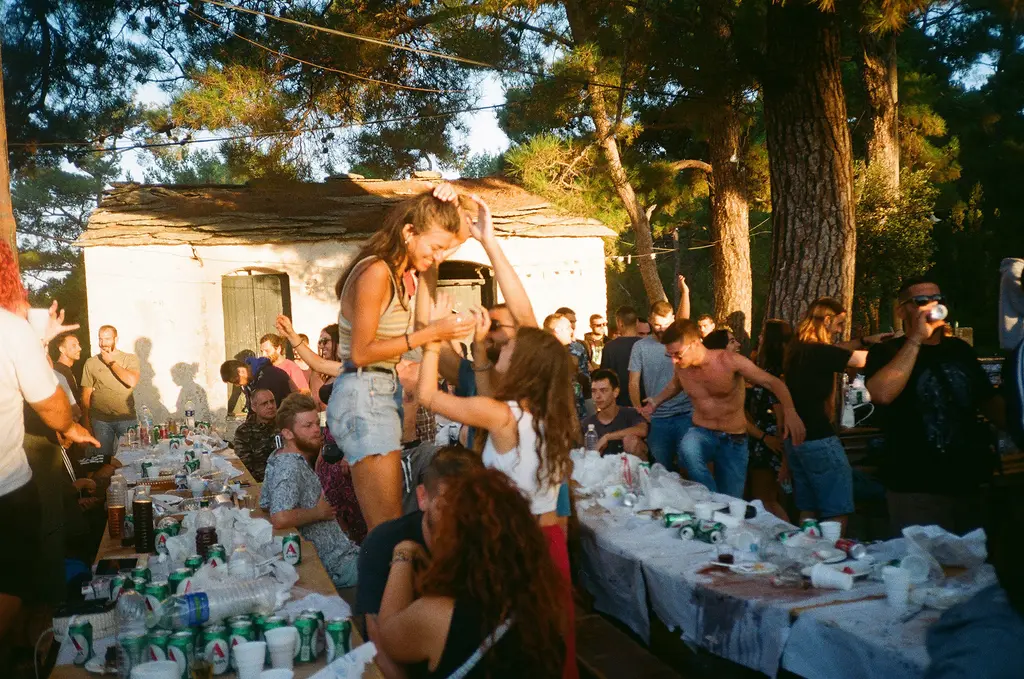
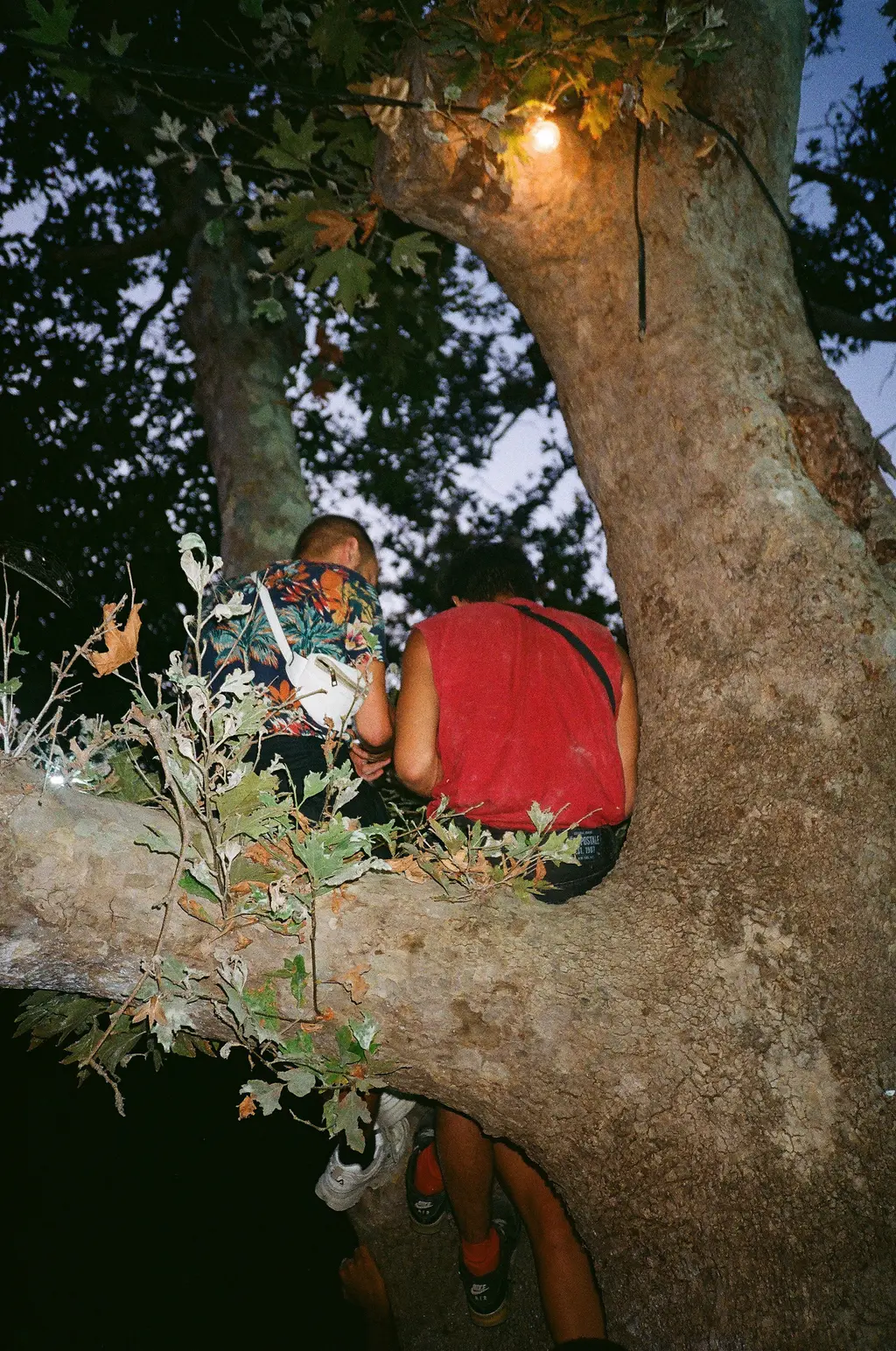
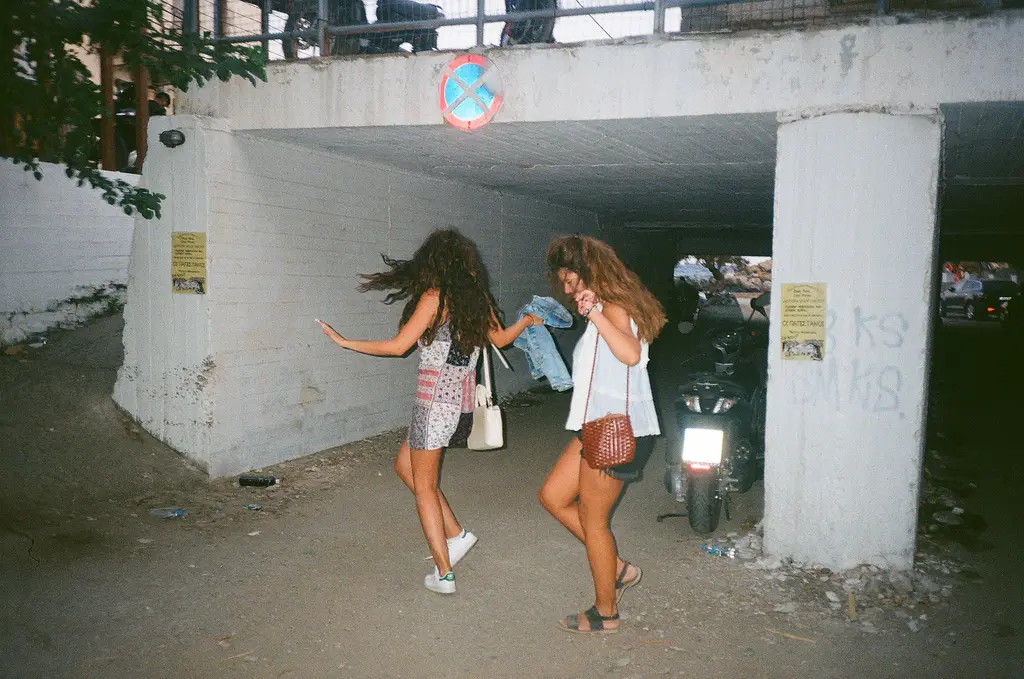
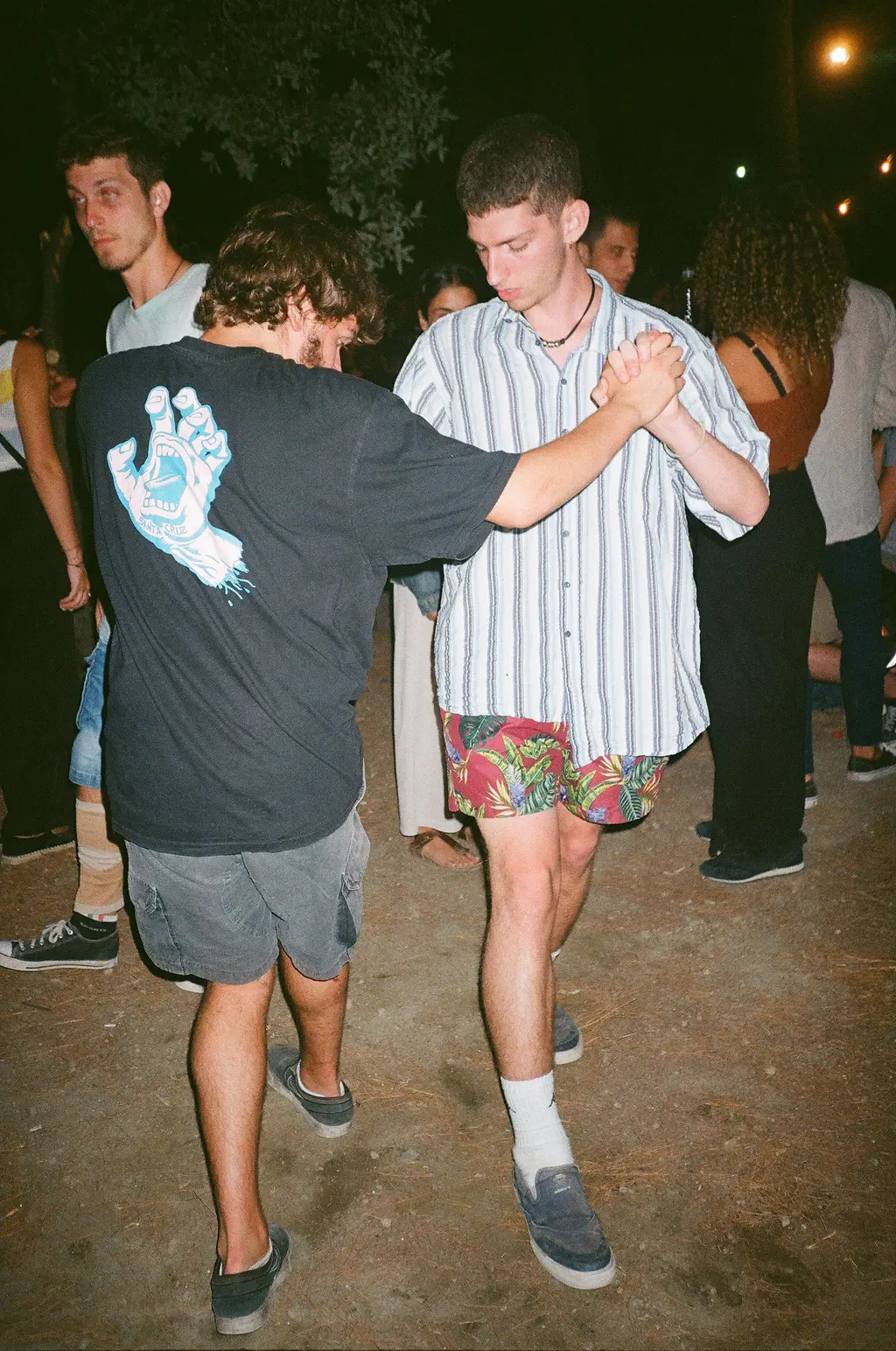
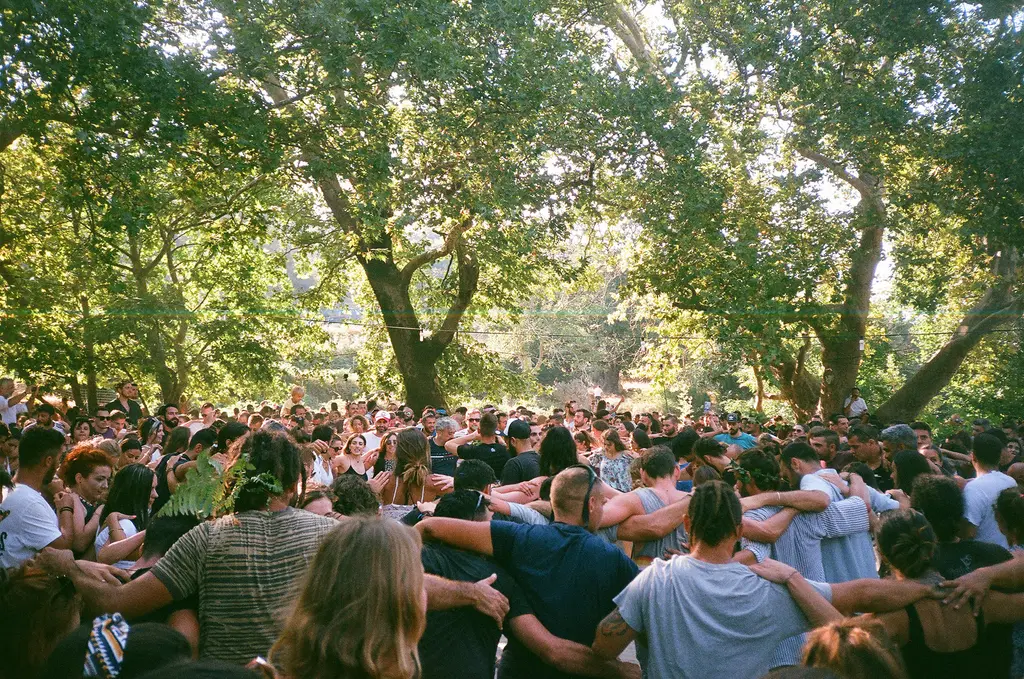
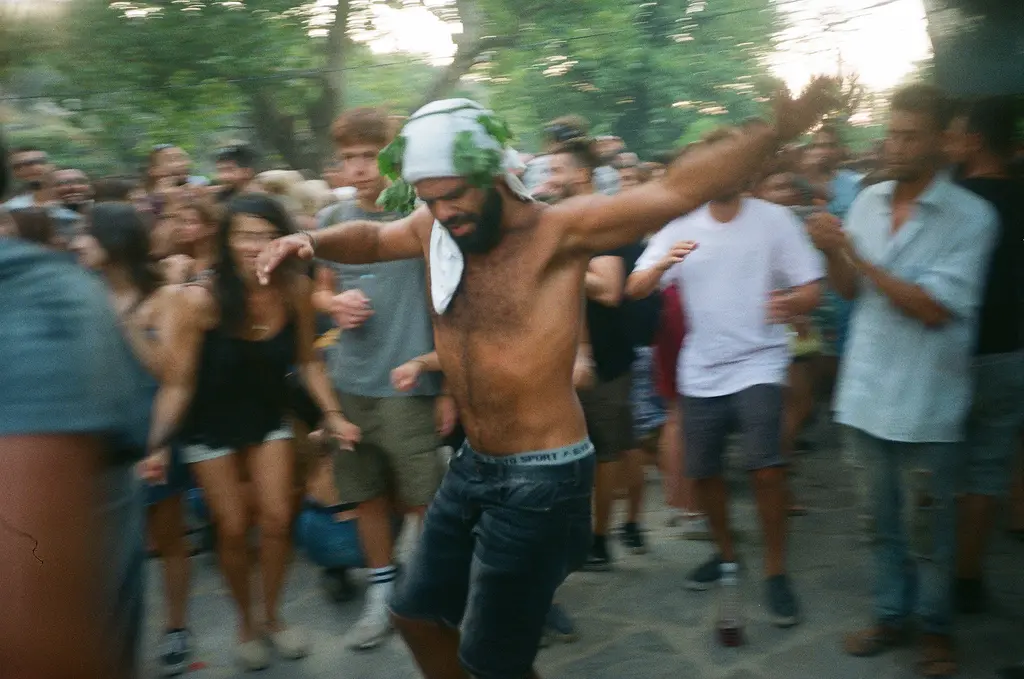
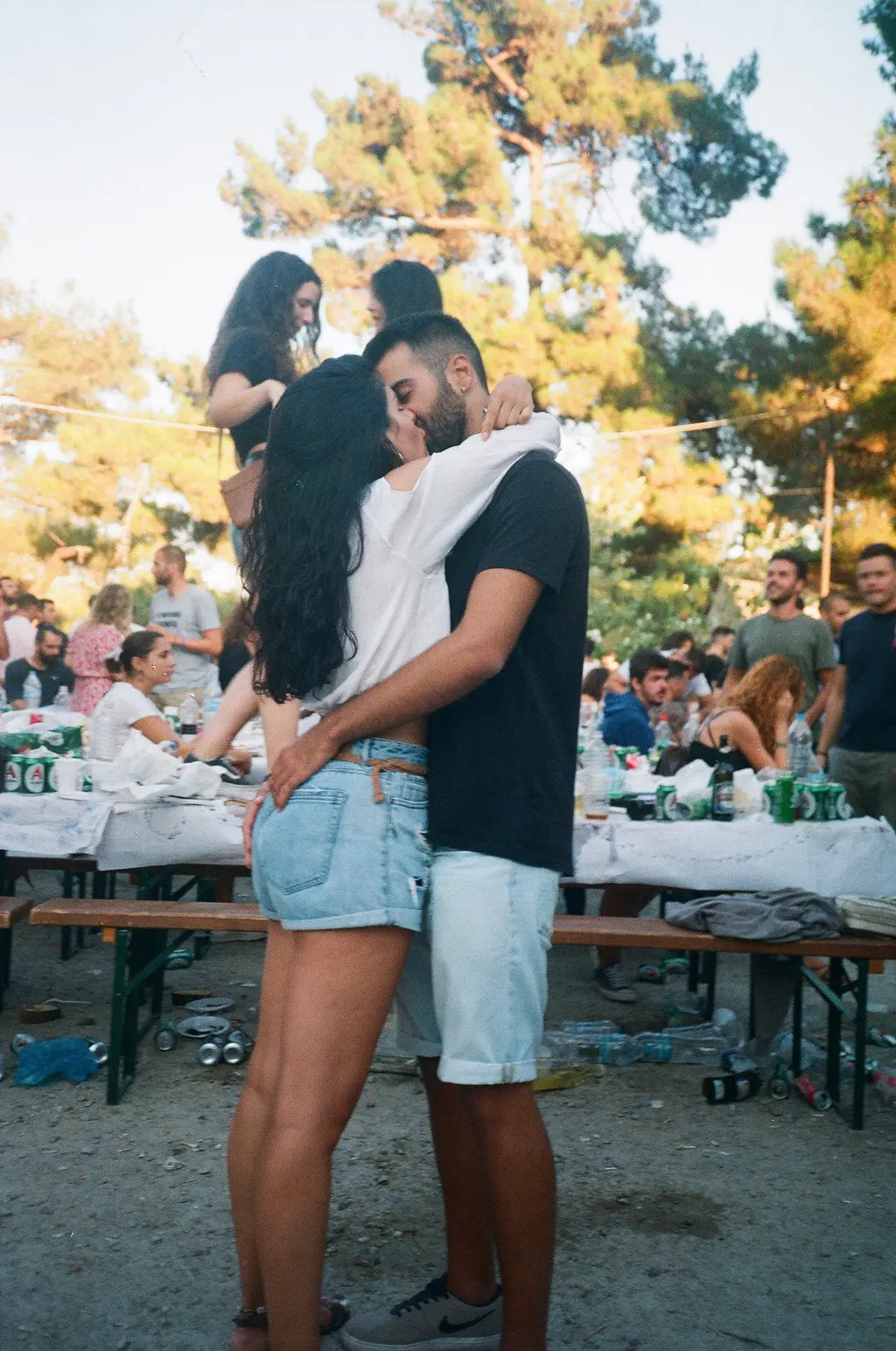
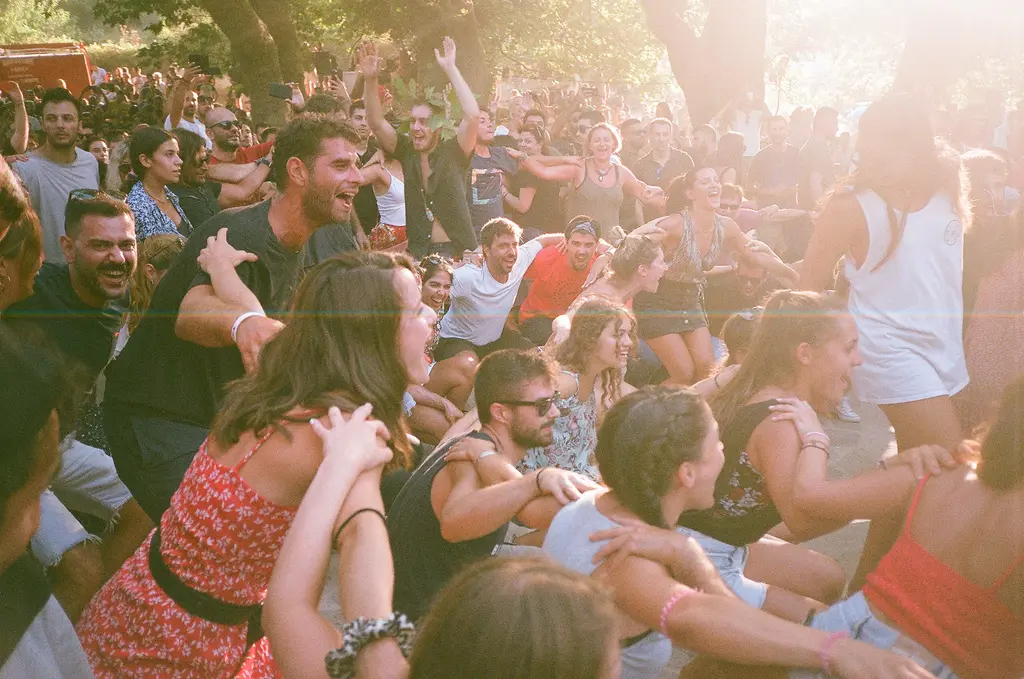
The music played at the Panigyri is very traditional Greek folk called Nisiotika or Island Music. “The same songs that have been played for centuries are going to be played again and again in repetition,” says Kyveli. The accompanying dance moves may look simple but are, in fact, very intricate; with subtle differences distinguishing one village from the next. What is essential and universal though, is the togetherness. Circles form, with arms around shoulders.
“You could definitely say that for straight people it is a bit like a cruising ground,” laughs Spyros. “There is a sexual energy. There is also a type of ‘bro’ energy. In the same way that straight dudes, when they go to a rave, might get quite huggy with each other. You’re gonna be getting very sweaty and close with a stranger”.
You see, there is something for everyone at the island parties. Unlike a standard electronic dance event, the joy of the Panigyri relies on the intergenerational aspect; the hint of classic wedding dance floor. Spyros may have been Berlin-based for the last 15 years but he grew up in Greece. He talks of long and balmy summers spent at his father’s house in Ipiros in northwestern Greece; the teenage years when the village party meant so much. “These were my summer childhood memories,” he explains. “You experience a sort of awakening and coming of age. The Panigyri is an important part of that.”
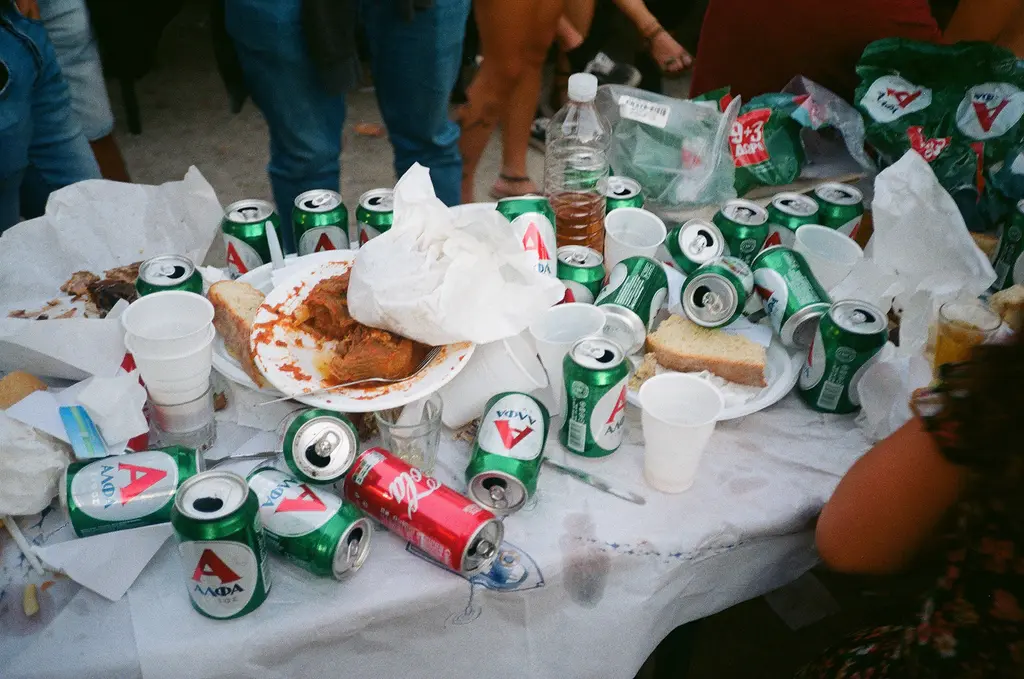
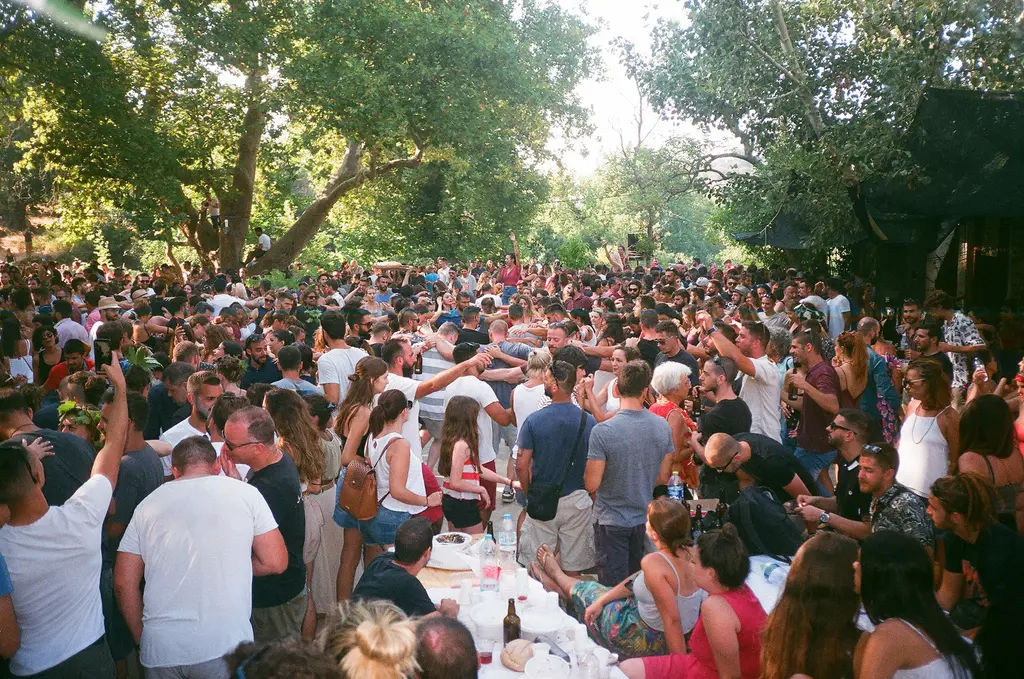
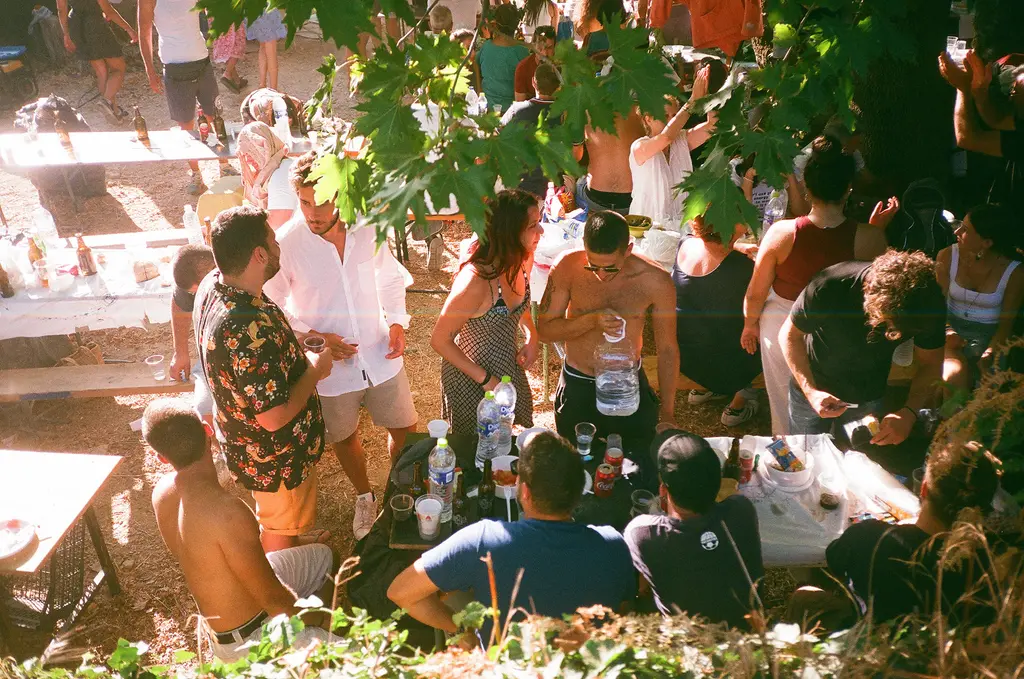

Kyveli Zoi's art studio
Ritual lies at the heart of the occasion, where food and wine are as important as the music. Preparations begin at dawn. “The locals gather to prepare the food from early in the morning,” says Kyveli. “A certain number of goats are slaughtered for the event, the wine which has been collected patiently since the previous September is ready to be enjoyed.”
The coming together of all of these elements happens as night falls in the village square, long tables heaving with paper plates piled high with meats and wine poured from clay pots into plastic cups. The Nisiotika builds slowly until locals begin to rise from their seats and start the dance. “The scene is quite surreal,” says Kyveli. “You may see people with selfie sticks dancing alongside elder locals. Everyone is different, but it is clear that everyone attends so they can experience this primitive way of feasting and partying.”
Twenty-twenty represents the first year in generations where the Panigyri will not go ahead. And both Spyros and Kyveli agree that they would prefer no party at all than one that cannot remain true to the core elements. “The parties are all about closeness, socialising, touching, exchanging bodily sensations through dancing,” says Kyveli. “A pandemic is a reminder of death, this is a feast made to celebrate life.”












